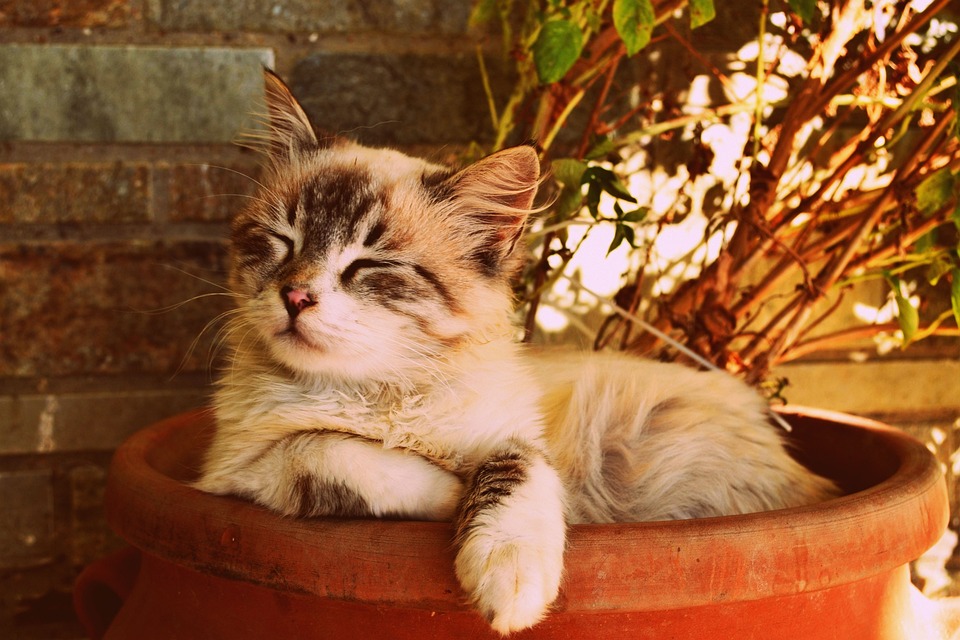Aging is an inevitable part of life, and our beloved feline companions are no exception. As cats grow older, they may experience a range of physical and behavioral changes that require attention and care. By recognizing the signs of aging in cats and addressing them promptly, we can ensure that our furry friends enjoy a comfortable and fulfilling life.
One of the most common physical signs of aging in cats is a reduced activity level. As cats age, they tend to become less energetic and spend more time sleeping or resting. While this is a natural part of the aging process, a sudden decrease in activity could be a sign of an underlying health issue and should be evaluated by a veterinarian.
Joint stiffness and arthritis are also common issues in aging cats. They may show difficulty in jumping, climbing, or a reluctance to engage in physical activities they once enjoyed. Providing them with soft and comfortable surfaces to rest on, as well as low-impact exercise options, can help alleviate their discomfort.
Changes in weight are another physical sign of aging in cats. Older cats may experience weight gain or weight loss. Weight gain can be a result of decreased activity and a slower metabolism, while weight loss might indicate dental issues, organ dysfunction, or other underlying health problems. Monitoring your cat’s weight and consulting with a veterinarian if there are significant changes is crucial for their well-being.
Dental problems are common in aging cats and can cause discomfort and pain. Look out for signs such as bad breath, excessive drooling, difficulty eating, or inflamed gums. Regular dental check-ups and dental hygiene practices, such as brushing their teeth with cat-friendly toothpaste, can help maintain your cat’s oral health.
Aging can also affect the quality of a cat’s coat. Their fur may become dull, dry, or develop bald patches. Regular grooming and a nutritious diet can help maintain a healthy coat and prevent skin issues.
In addition to physical signs, there are behavioral changes that may occur in aging cats. Increased vocalization is one such change, which can be attributed to cognitive changes or underlying medical conditions. If excessive vocalization occurs suddenly or is accompanied by other concerning symptoms, consult your veterinarian.
Changes in litter box habits are another behavioral sign of aging in cats. Older cats may experience issues such as urinating or defecating outside the litter box. This can indicate urinary tract problems, arthritis pain, or cognitive decline. Providing a comfortable and easily accessible litter box and seeking veterinary advice can help address these issues.
Sleep pattern changes are also common in aging cats. While they tend to sleep more and have altered sleep patterns, excessive sleepiness or insomnia can be signs of underlying health problems and should be evaluated by a veterinarian.
Increased anxiety, aggression, or confusion are behavioral changes that some senior cats may exhibit. These changes could be linked to cognitive dysfunction syndrome (CDS), a condition similar to Alzheimer’s disease in humans. Consulting with a veterinarian for appropriate management strategies can help improve your cat’s quality of life.
To address aging-related issues in cats, regular veterinary check-ups are essential. Regular visits to the veterinarian become increasingly important as your cat ages, as they can help detect and address any health issues early on.
Dietary adjustments are also crucial for senior cats. Providing a balanced and nutritious diet tailored to their specific needs is important. Specialized senior cat food formulas are available that provide appropriate nutrients to support their aging bodies.
Exercise and mental stimulation are important for aging cats. Engaging them in gentle exercise and providing interactive toys, scratching posts, and low-impact play sessions can help maintain their physical and cognitive abilities.
Pain management is crucial for cats experiencing joint stiffness or discomfort. Consulting with your veterinarian for appropriate pain management options, such as supplements, medications, or alternative therapies like acupuncture, can help alleviate their discomfort.
Making necessary environmental adaptations is also important. Adjustments to your cat’s environment, such as providing easy access to litter boxes, food, and water bowls, as well as comfortable resting areas, can make their daily lives easier and more comfortable.
In conclusion, recognizing the signs of aging in cats and addressing them promptly is crucial for their continued well-being. By monitoring their physical and behavioral changes, seeking veterinary advice, making necessary adjustments, and providing appropriate care, we can ensure that our aging feline companions enjoy a happy and comfortable life.








